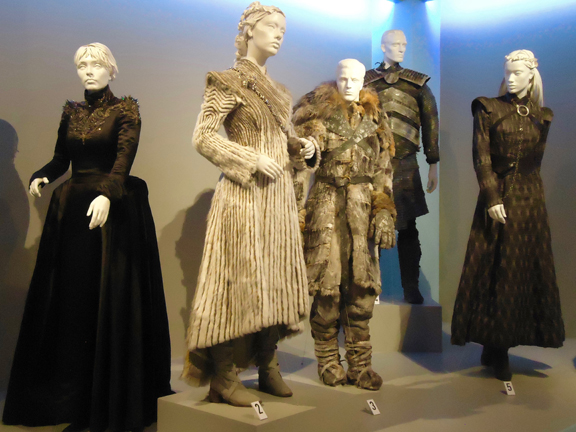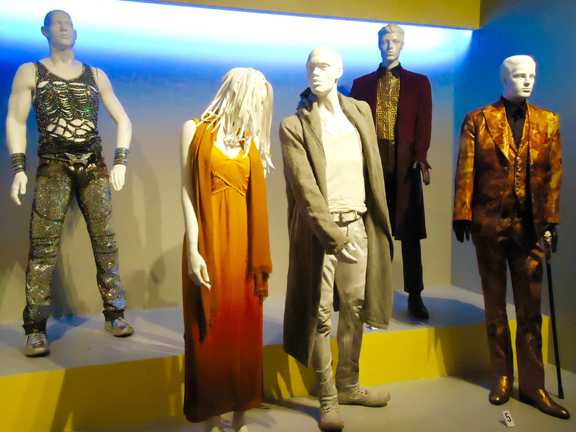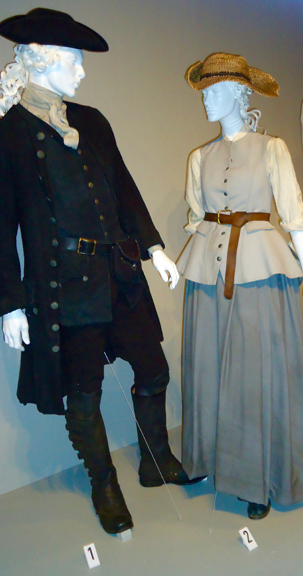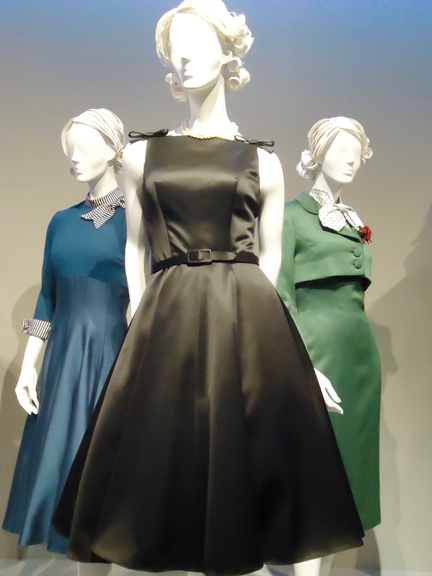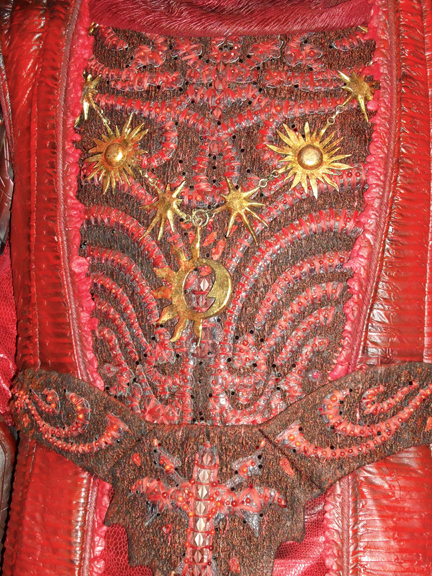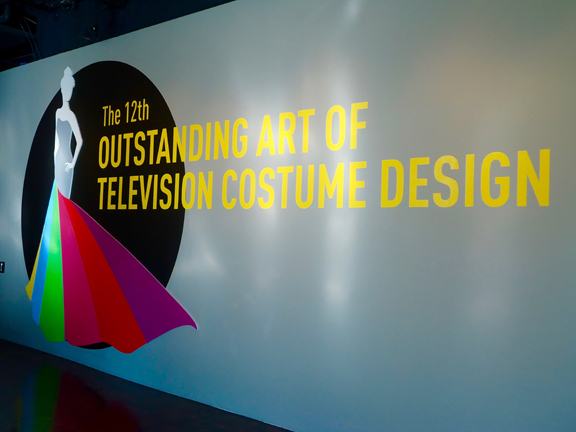Through Saturday, Oct. 6, the 12th Annual Art of Television Costume Design Exhibition is open free to the public from 10 a.m. to 5 p.m. at the Fashion Institute of Design and Merchandising (FIDM) on the corner of Grand Avenue and 9th Street in Los Angeles. Over 100 costumes from 24 featured television shows, nine of them nominated for an Emmy, are on display.
This year the Emmy costume category has been split into four divisions – Reality/Variety, Fantasy/Science Fiction, Contemporary and Period Costume. Instead of the usual five nominees, there are now 20, which is a lot of fabric to consider. The designs that fill out the Period Costume nominations are fascinating time machines into pasts distant and not so distant.
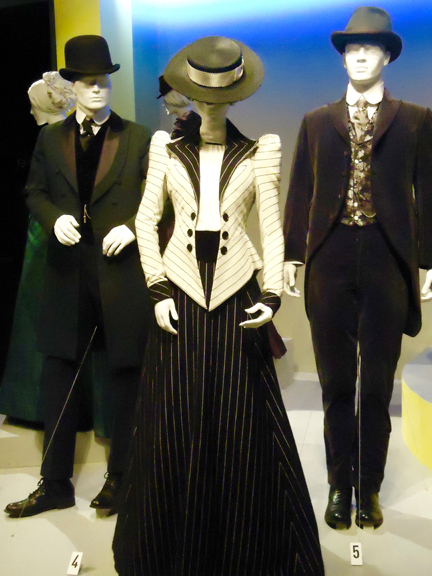
The Alienist
Terry Dresbach’s costumes for “Outlander” bracket the show’s time-traveling characters caught between the mid-18th and mid-20th centuries. Simple silhouettes and similar subdued tones of tan, grey, black and ecru that are on display tie the two periods together. The brown leather belt and off-side hat used for Caitriona Balfe’s character Claire add just a touch of nonconformity to her 18th-century look.
Invoking striking shapes in Rorschach ink, a clever nod to the series’ subject, the mirror image is Michael Kaplan’s choice in his designs for “The Alienist.” Set in 1896 New York City in the world of early psychiatry, Dakota Fanning plays New York’s first policewoman, Sara Howard, who appears on the screen sharply dressed in a graphic black and white pinstriped skirt and cream jacket with matching pinstriped lining. The design pops visually and not only reflects the character’s society background and immaculate fashion sense, but establishes her as someone on the cutting edge of a new age.
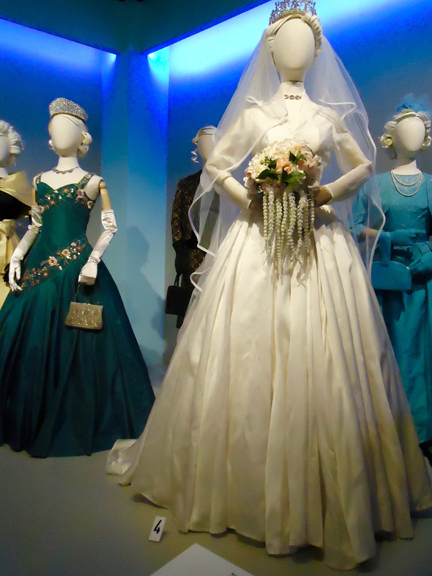
The 20th century is represented by Jane Petrie’s costumes for “The Crown” where her version of the dress worn by Princess Margaret at her 1960 wedding to Antony Armstrong-Jones is a standout. According to Nick Verreos, designer, entrepreneur and co-chair of the FIDM Fashion Design Program, the cream silk gown is elegant, fresh and modern. Its elegance is matched by the looks designed by Sonu Mishra for “Genius: Picasso.” Unlike the confined world of the British Royals, however, Picasso lived in a world of color and bohemian expansiveness.
According to Mishra, “Picasso lived so many different lives within this one life of his” that the variety of looks she had to work with was liberating.
Bohemia, too, was the theme of Donna Zakowska’s costumes for “The Marvelous Mrs. Maisel,” which takes place in New York City in 1958. Color was particularly important for the character moving from a wifely look in rich pink to an “I gotta be me” little black dress in shimmering satin. The sculptural look of the ’50s, when designers like Dior and Balenciaga reigned supreme, was reflected in Zakowska’s pared-down outfits worn by a housewife trying to break into the stand-up comedy scene of the West Village.
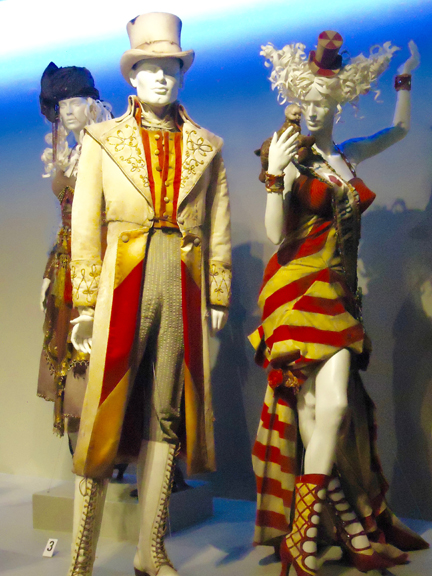
While period costumes must stick to their period, fantasy costumes can go anywhere. Cynthia Summers’ remarkably creepy costumes for “The Carnivorous Carnival” episode of “A Series of Unfortunate Events” are styled for thrills and chills from their complicated lace-up boots to the grubby plastic baby doll accessory on Esmé Squalor’s shoulder. Summers created the costume for Esmé Squalor out of a dirty old tent and distressed the fabrics to match the grunginess of the carnival the characters inhabit.
From two completely different fantasy universes come the aggressively-furred robes by Michele Clapton worn by those who live in Westros in “A Game of Thrones” and the sleek traditional Japanese kimono looks by Sharen Davis for the alternate robot universe of “Westworld.” Compared to these, Paul Tazewell’s Variety Nomination designs for “Jesus Christ Superstar” looks as if they walked out of show star John Legend’s closet.
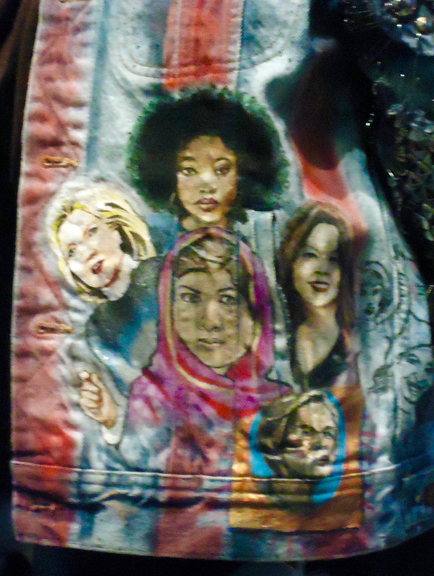
Even though some of the costumes on display weren’t nominated (and maybe they should have been), be sure to check out the fantastic sci-fi looks that Joseph Porro created for ‘The Orville,” complete with life-like, outer-space mannequins, and the detailing on Staci Greenbaum’s trendy togs for the comedy show “Broad City.” The challenging faces of powerful women from Malala to Hillary watch the world from the front of one character’s painted denim jacket keeping an exhibition that’s full of fantasy in touch with what is real.

